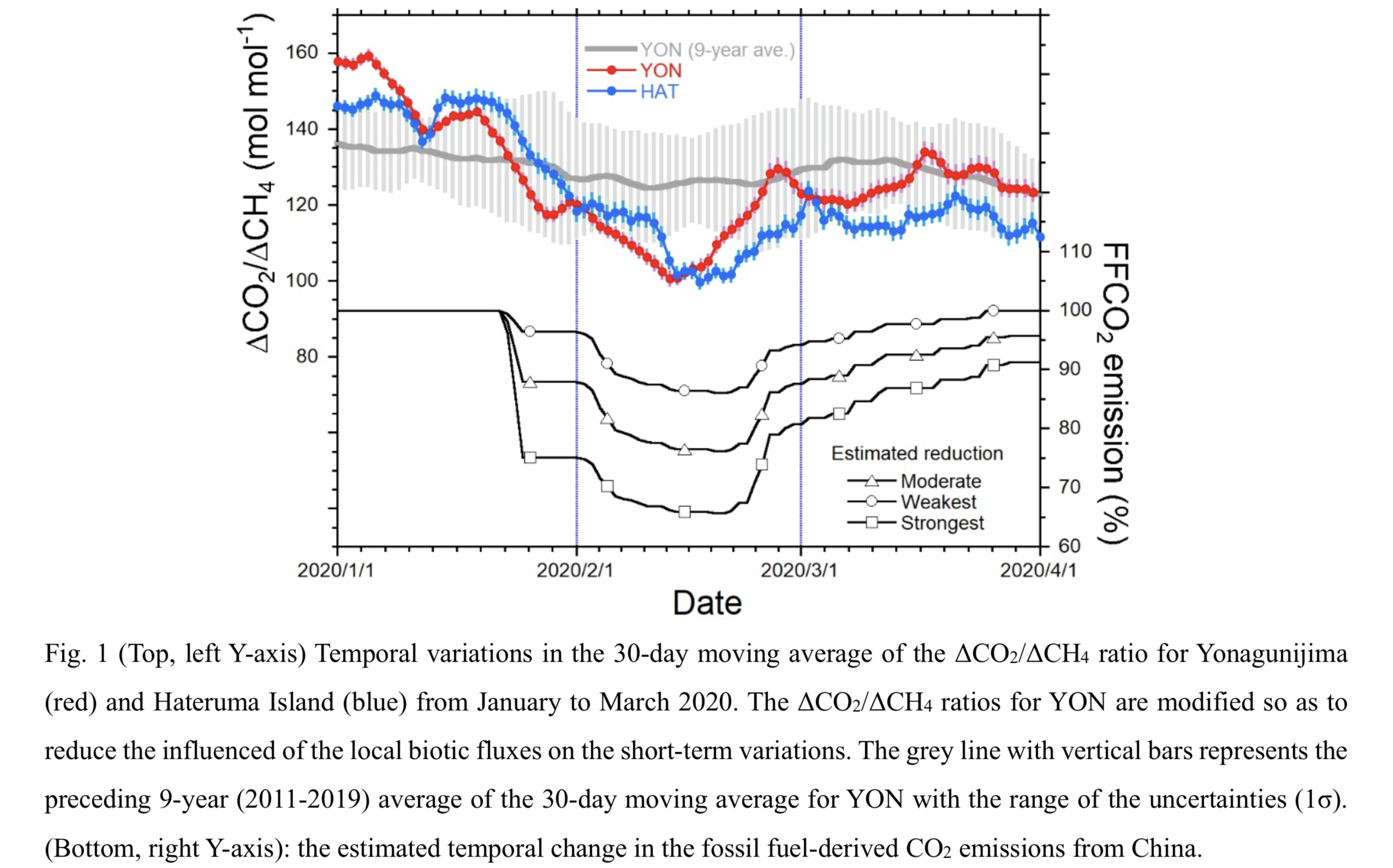Graphical Abstract
Tohjima, Y., Y. Niwa, K. Tsuboi, and K. Saito, 2022: Did Atmospheric CO2 and CH4 observation at Yonagunijima detect fossil-fuel CO2 reduction due to COVID-19 lockdown? J. Meteor. Soc. Japan, 100, 437-444.
https://doi.org/10.2151/jmsj.2022-021.
Graphical Abstract
Published
Plain Language Summary: Atmospheric observation at Yonagunijima is generally influenced by air masses from the Asian continent during winter because of the East Asian monsoon. The atmospheric carbon dioxide and methane observed at Yonagunijima during a period from January to March in 1998-2020 were analyzed. After the influences of the local biotic emissions on the short-term variability were reduced, the variability ratios (ΔCO2/ΔCH4) showed a marked decrease in February 2020 associated with the considerable reduction of the fossil fuel-derived CO2 emission in China presumably caused by the COVID-19 lockdown. This result convinced us that the variability ratio could be useful to investigate the relative emission changes in the upwind region.
Highlights:
- Monthly means of synoptic-scale variability ratios of the atmospheric CO2 and CH4 (ΔCO2/ΔCH4) observed at Yonagunijima, after influences of the local biotic fluxes on the short-term variations are reduced, well trace the changes in the relative emissions from the continental Asia.
- The ΔCO2/ΔCH4 ratio at Yonagunijima also showed a marked decrease associated with the COVID-19 lockdown in China in February 2020 as that at Hateruma Island, which is located to about 100 km east of Yonagunijima, did.
- Because Yonagunijima and Hateruma Island are located at the downwind side of the Asian continent that is the biggest CO2 emitter in the world, the atmospheric observations at both sites would continue to provide valid information on emission changes over the continent.







